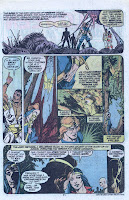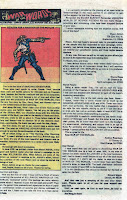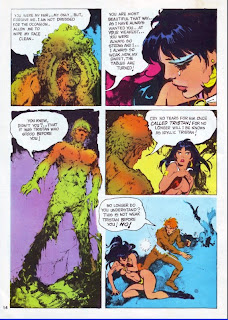'The Experiment' by Justo Jimeno
from the Spring 1986 issue of Heavy Metal magazine
Heavy Metal magazine ran into difficulties in 1986.
The magazine adopted a quarterly publication schedule, with Editor-in-Chief Julie Lynch declaring the change was expressly designed to provide readers with a longer-length magazine with 3 - 4 complete stories in each issue, as opposed to the previous philosophy of running stories in monthly installments.
This may have been true, or it may simply have been a way of putting a brave face on the reality of decreasing circulation.
By 1986 mainstream color comics were exploding in terms of titles and circulation, a phenomenon aided and abetted by the arival of dedicated comic shops. This may have been true, or it may simply have been a way of putting a brave face on the reality of decreasing circulation.
These shops served as comic book-centered brick-and-mortar retail outlets, replacing the five-and-dime and drugstore outlets that, up until the 80s, were the primary retail outlets for comic books.
Significantly, the existence of these shops also meant that non-Code approved books had a ready sales outlet perfectly timed to exploit the advent of a large demographic of comic book purchasers over 21.
Significantly, the existence of these shops also meant that non-Code approved books had a ready sales outlet perfectly timed to exploit the advent of a large demographic of comic book purchasers over 21.
Soon, the more 'adult' or 'mature' material that had been the sole playground of the Warren magazines, Heavy Metal, and Epic Illustrated, was flowing from myriad color comic books issued not only from the major publishers, but from an ever-expanding list of indie publishers. Stoners and emerging blocs of fanboys no longer had to spend 3 to 5 dollars for an issue of Heavy Metal or Creepy for their T&A; they could get it for $1.25 or less from a non-Code approved comic book.
Still, some good, shorter-length material did continue to appear in Heavy Metal, albeit more sporadically. Among the more memorable pieces was this creepy proto-Steampunk story, featuring outstanding artwork from the talented Spanish artist Justo Jimeno Bazaga.











































































